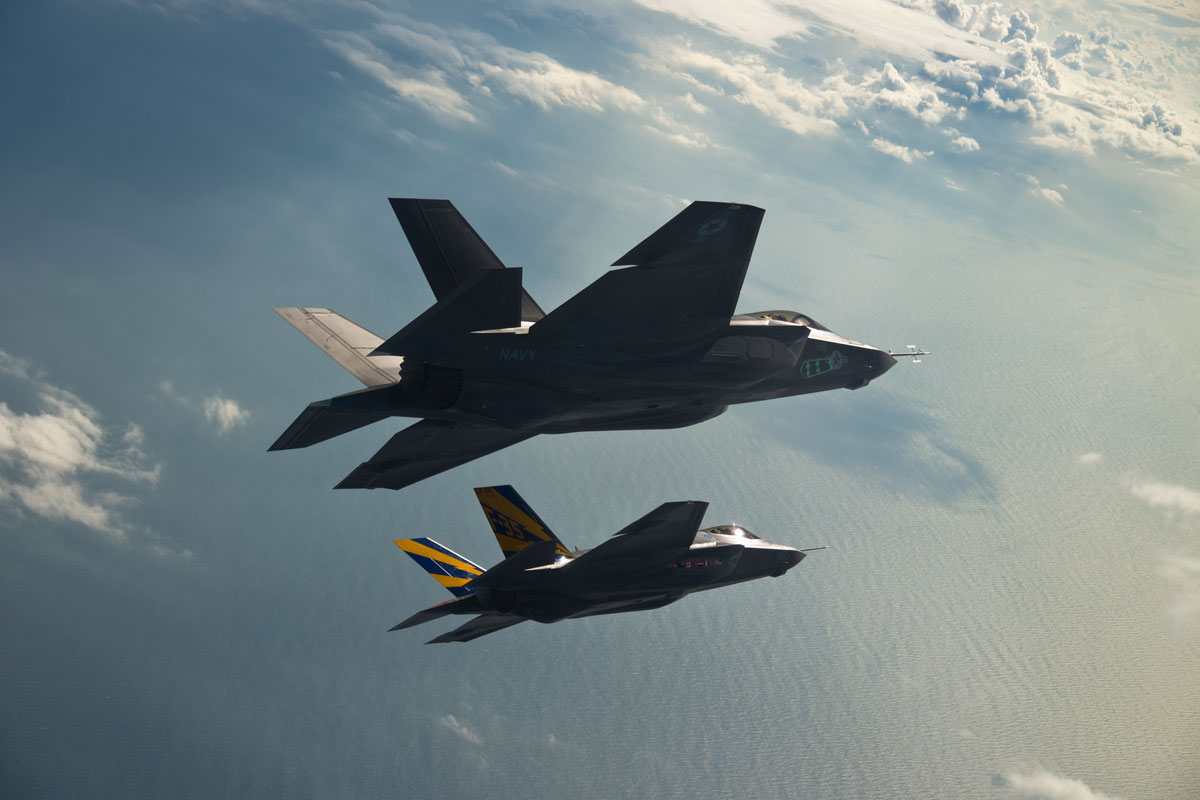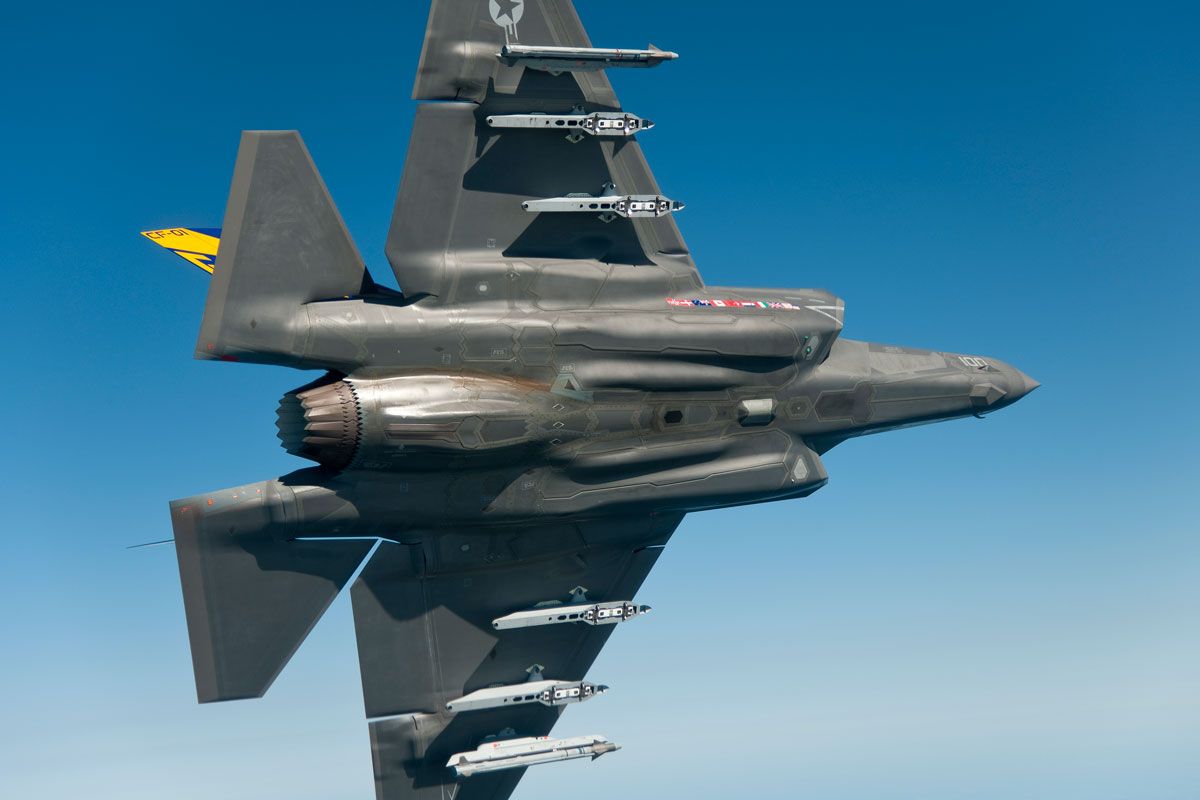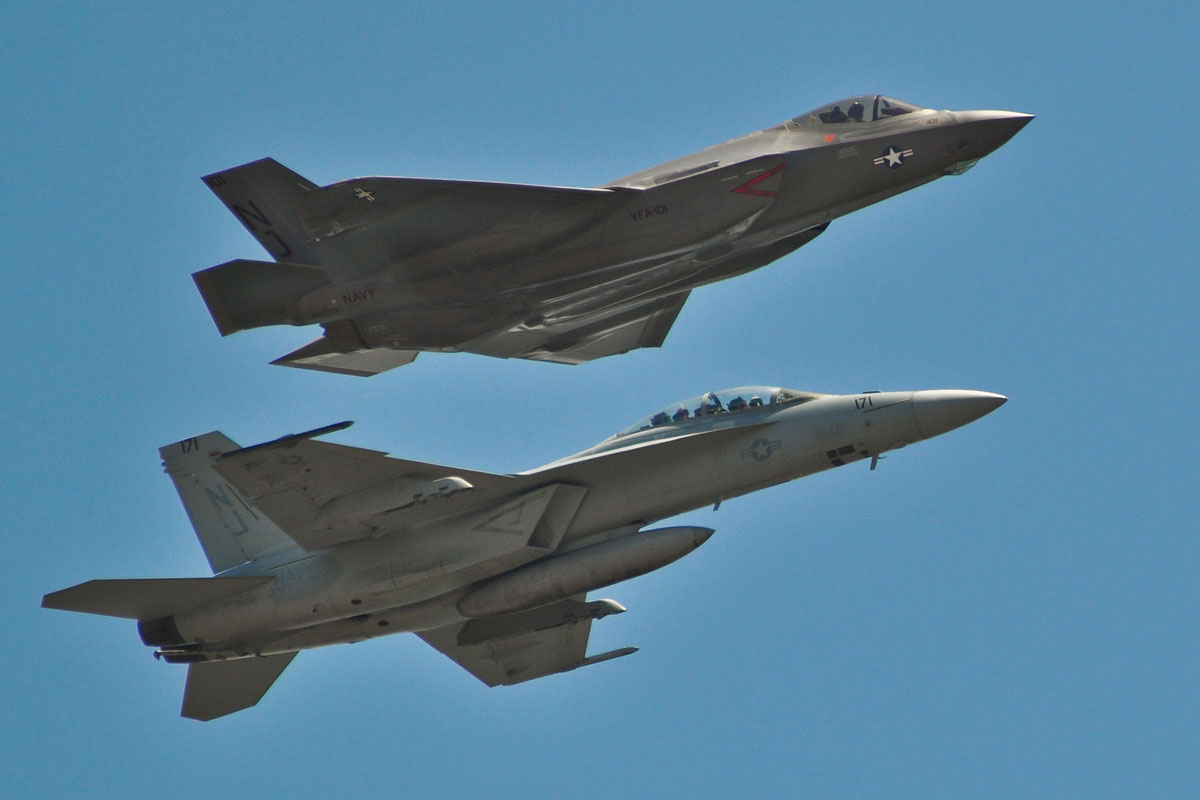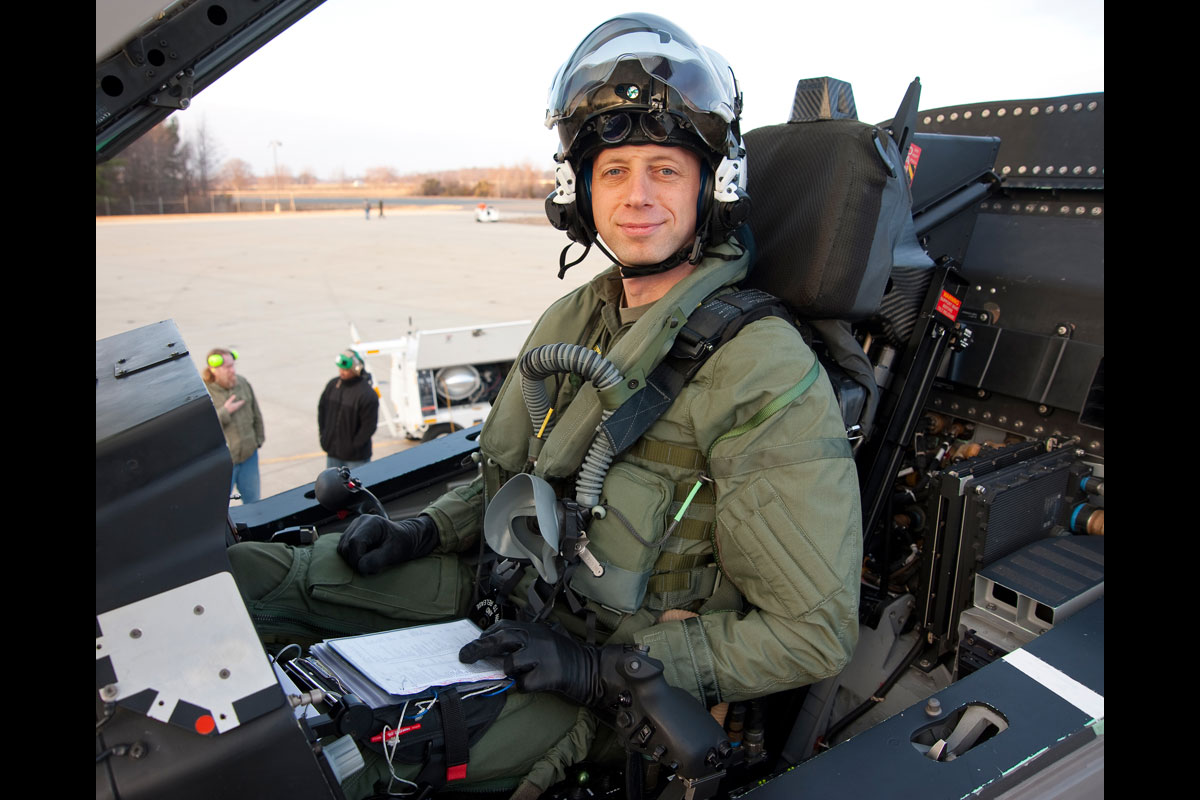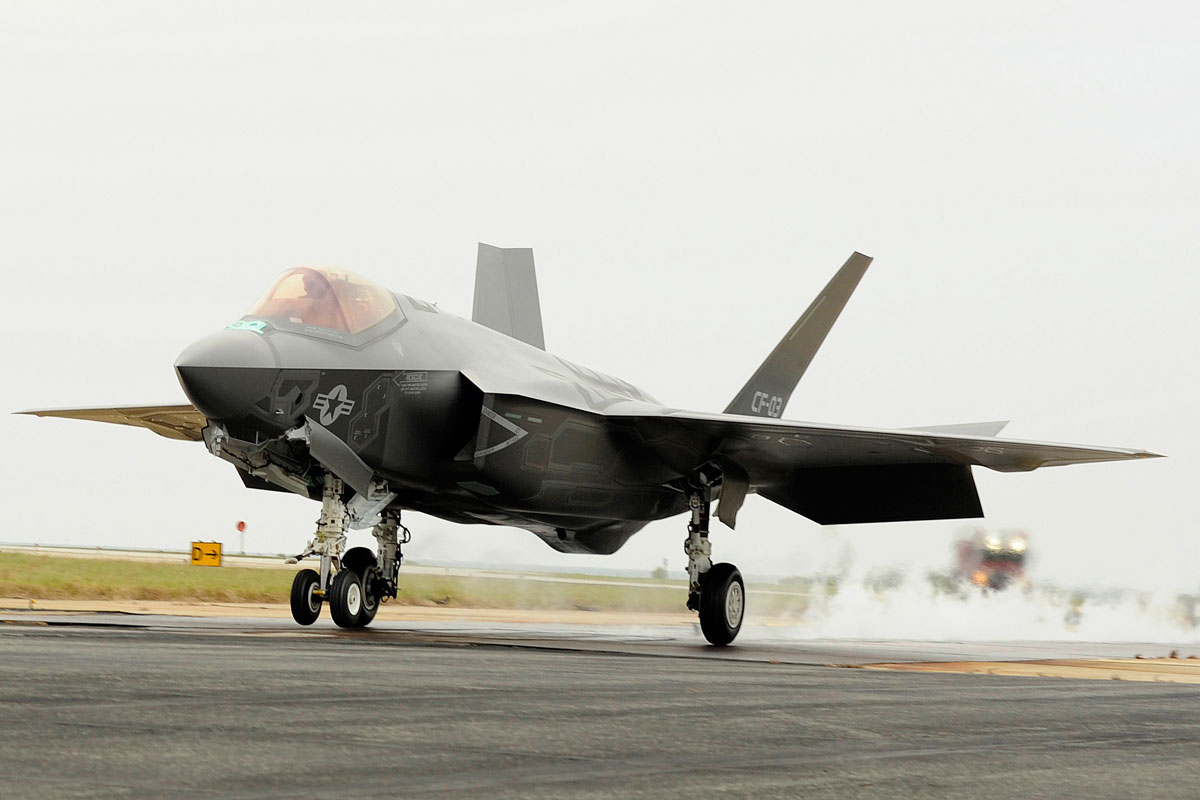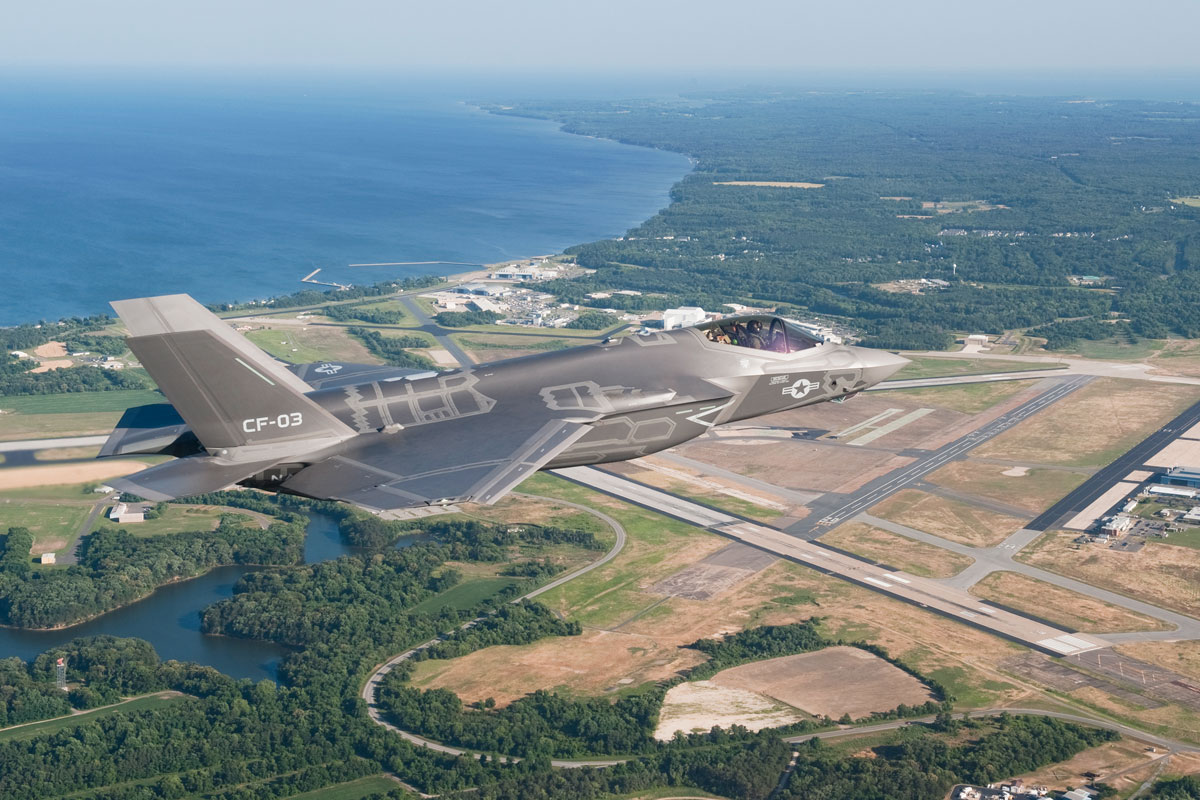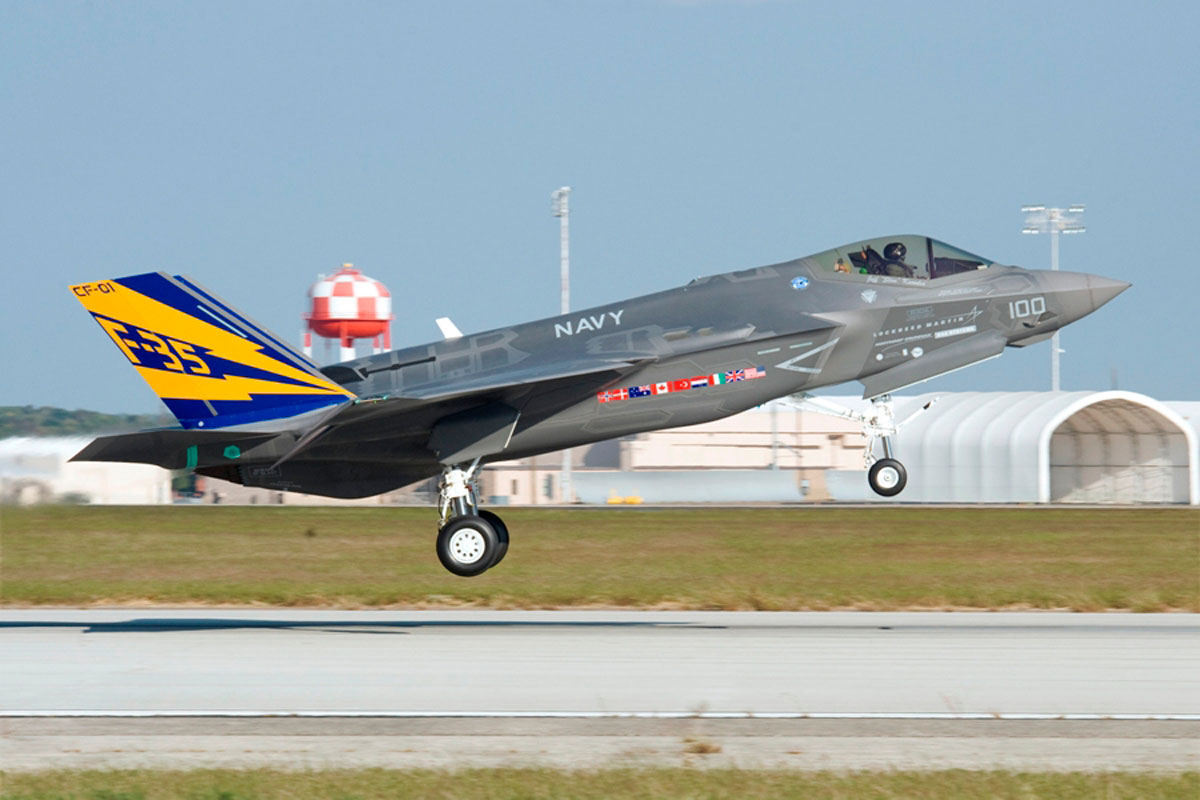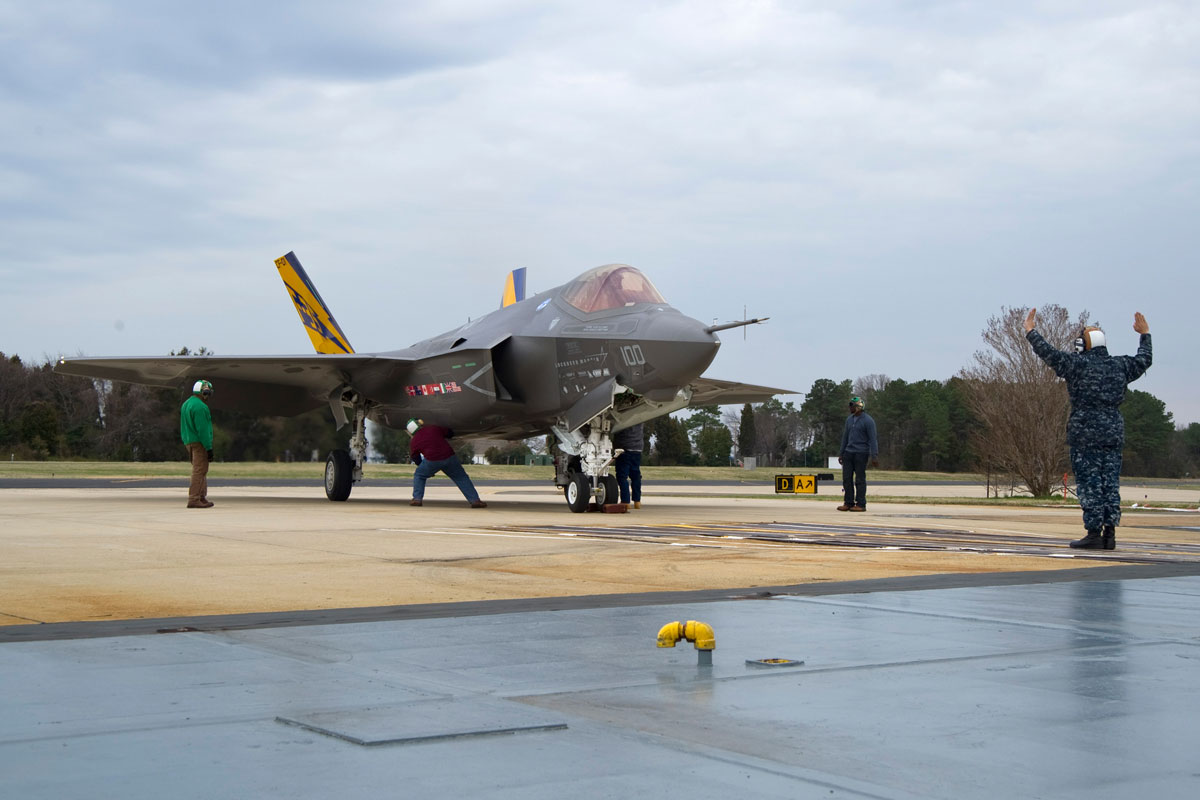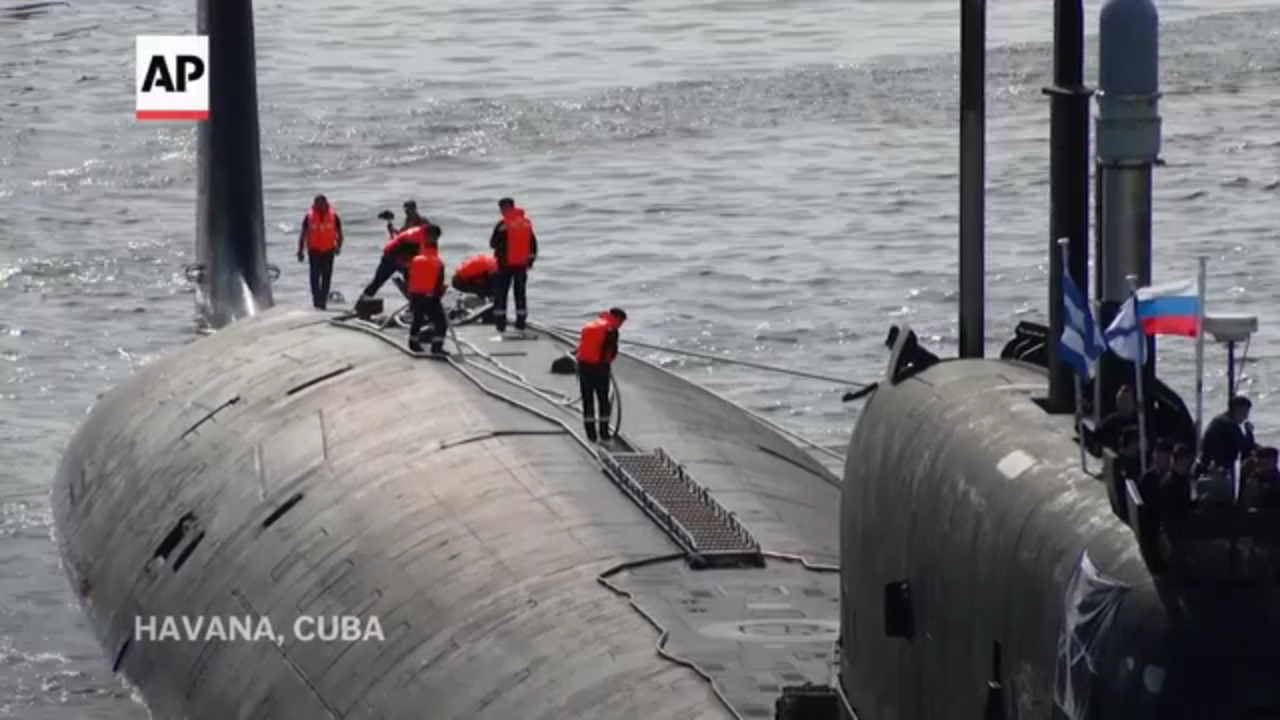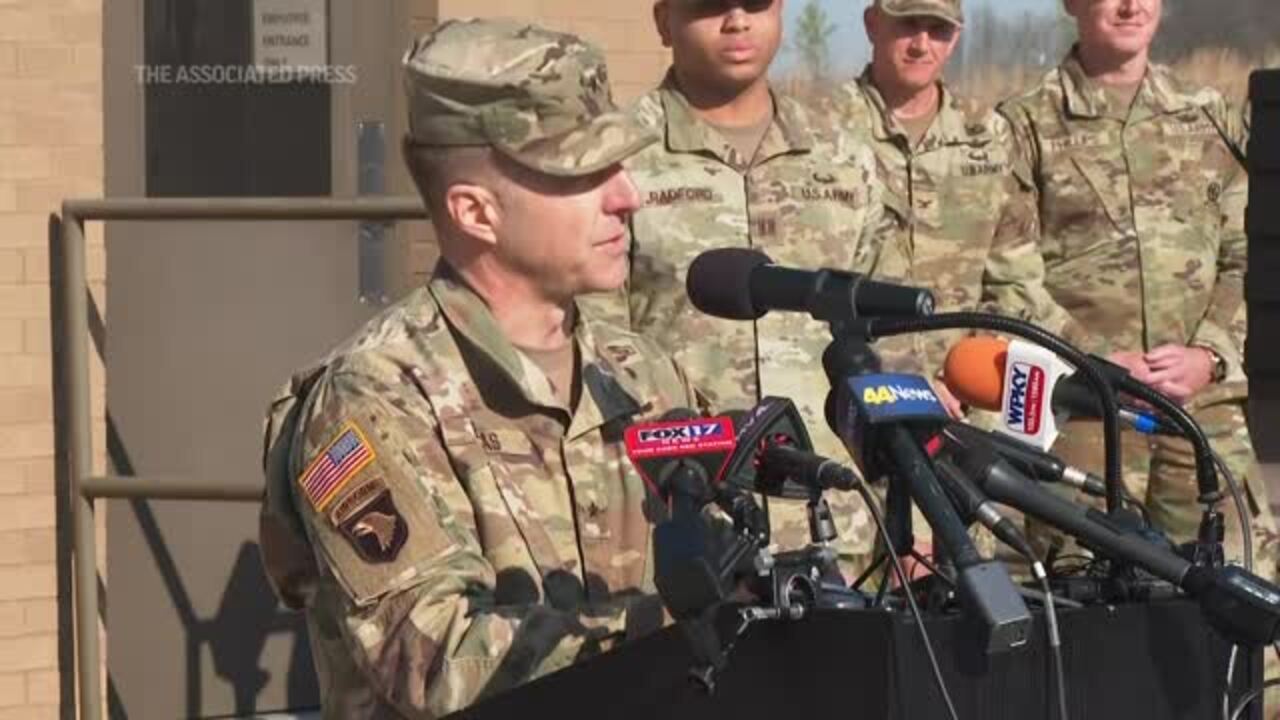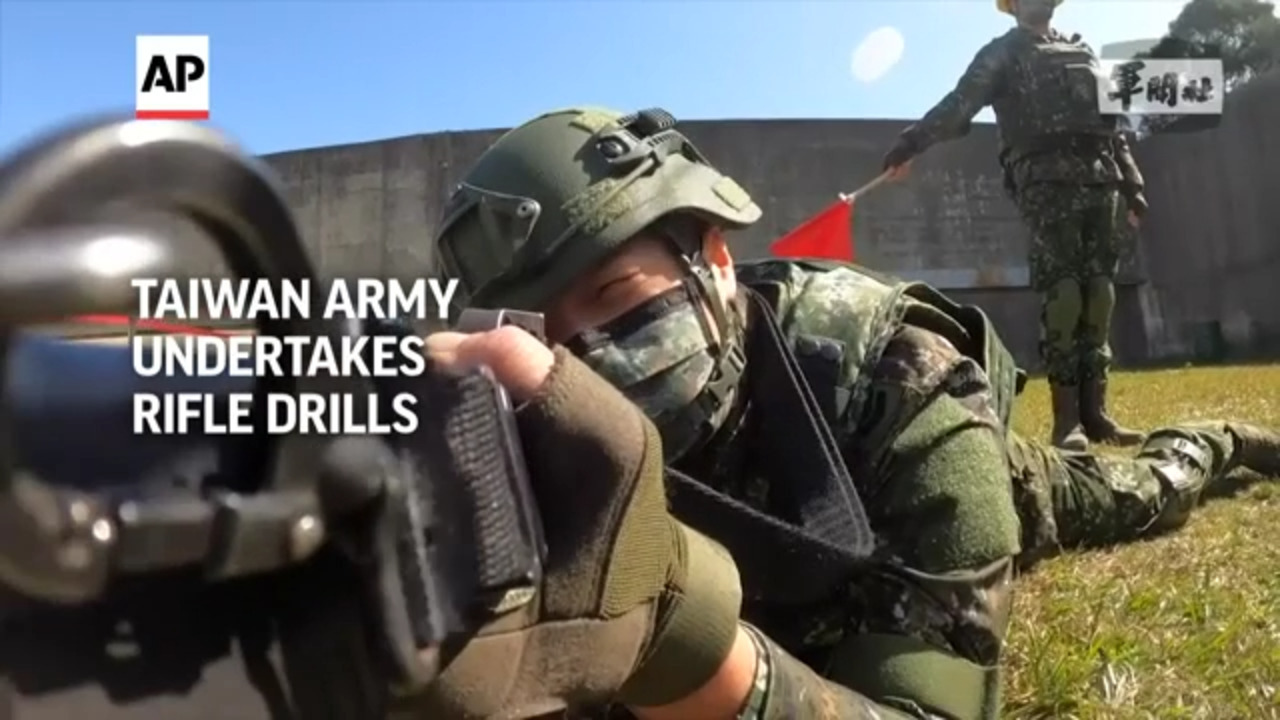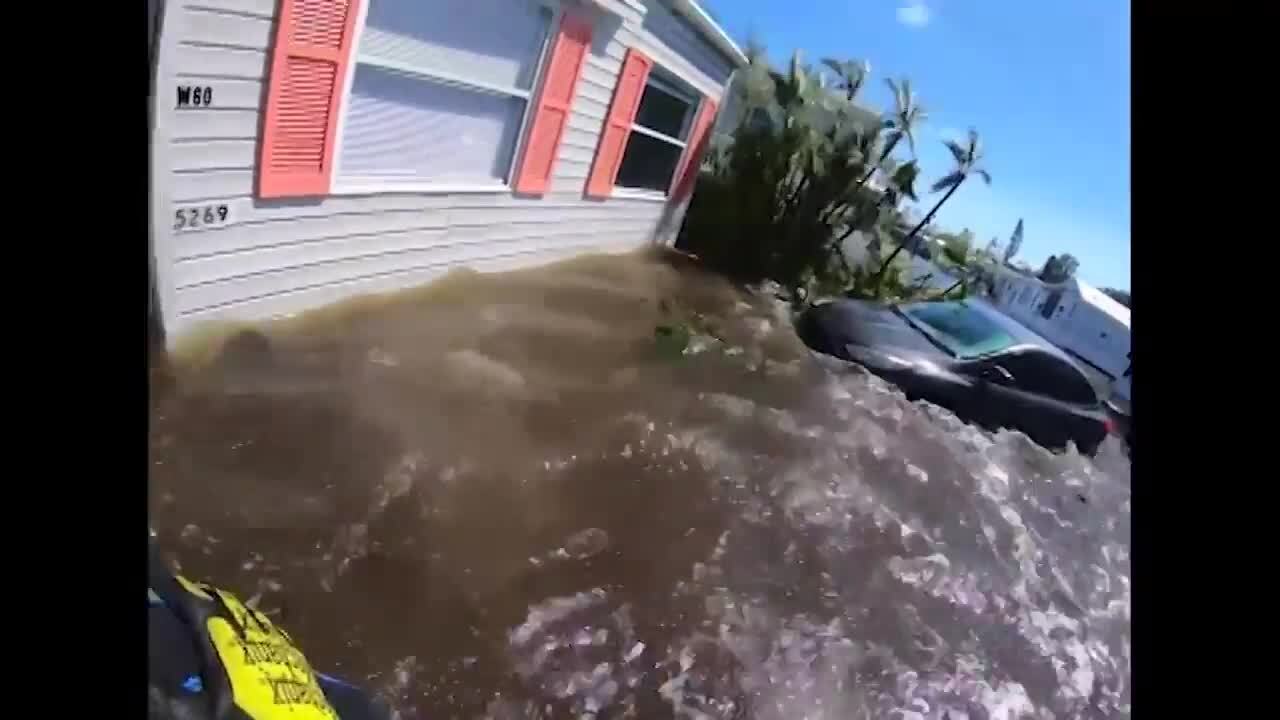Manufacturer: Lockheed Martin
Service: USN
Armament: 25 mm GAU-22/A; 2x AIM-120C air-to-air missiles; 2x GBU-31 JDAM
Propulsion: F135-PW-100 -- 40,000 lb Max; 25,000 lb Mil
Speed: Mach 1.6 (1,200 mph)
Range: 1,200 nm
The F-35C Lightning II is the U.S. Navy’s first low-observable carrier-based aviation platform. The F-35 is being purchased to replace the F/A-18C/D Hornet as the carrier strike group’s primary offensive fighter for aerial defense and close air support.
The U.S. Navy and Marine Corps' carrier variant has larger wings and more robust landing gear than the other variants, making it suitable for catapult launches and fly-in arrestments aboard naval aircraft carriers. Its wingtips fold to allow for more room on the deck on the carriers while deployed. The CV has the greatest internal fuel capacity of the F-35 variants, and, like the F-35B, the C-variant uses probe and drogue refueling.
Following an intense four-year competition, the U.S. Department of Defense on 26 October 2001, named the Lockheed Martin lead Joint Strike Fighter (JSF) team as the winner of the contract to develop the F-35 JSF.
Related Video:
Lockheed Martin is the F-35 prime contractor, while Northrop Grumman and BAE Systems are principal partners in the project.
Final assembly of the F-35 will take place at Lockheed Martin Aeronautics Company in Fort Worth, Texas. Northrop Grumman Corporation in Palmdale and El Segundo, California will manufacture the center-fuselage, and the aft fuselage and tails will be manufactured by BAE Systems in Samlesbury, England. Lockheed Martin in Fort Worth will manufacture the forward fuselage and wings.
Flight-testing will be conducted at Fort Worth, Edwards Air Force Base, and Naval Air Station Patuxent River. Additionally, the STOVL and CV variants will undergo sea trials aboard American, British and Italian aircraft carriers.
